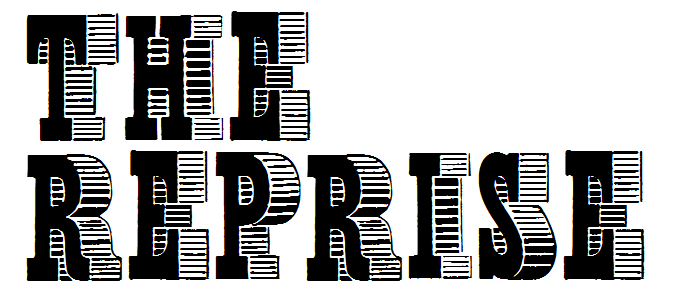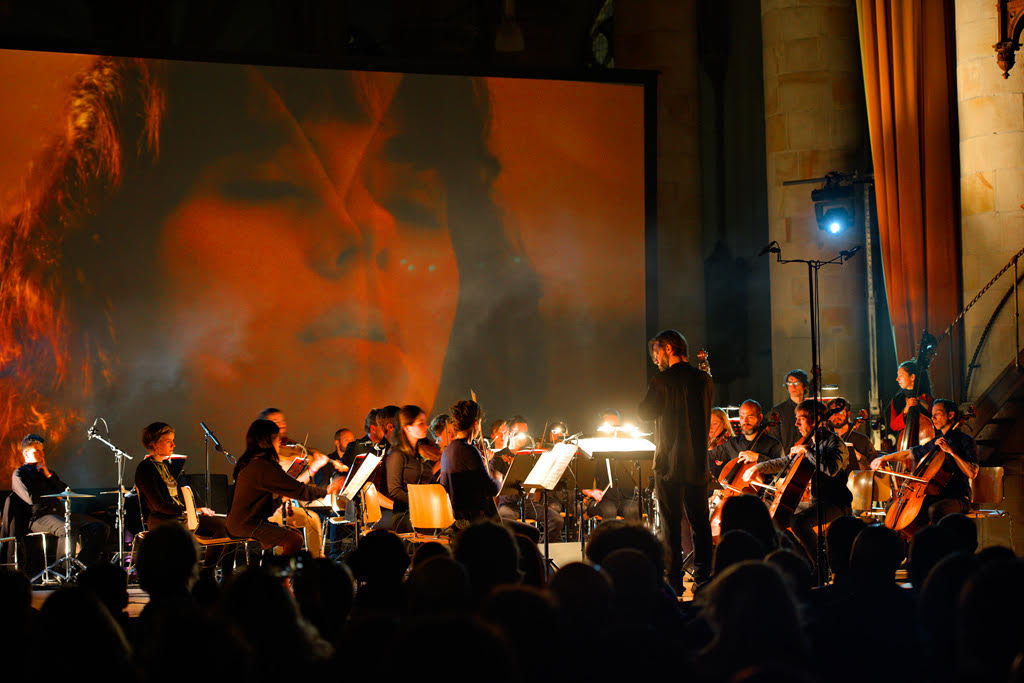You Don’t Want to Wake Up, Do You?: On Mica Levi’s 'Under the Skin' Score
This past weekend, The Reprise were lucky enough to attend Rewire Festival, a self-described ‘festival for adventurous music’ based in Den Hague, The Netherlands. The festival opened with a live rendition of the soundtrack to Jonathan Glazer’s breath-taking 2014 psychosexual science fiction horror film Under the Skin, performed in its entirety for the first time in Europe by German ensemble Stargaze. The performance was captivating, with the ensemble presenting the entire score sequentially, leading audiences through the terror, perversion, passion and humanity of Glazer’s film. This performance exemplified the importance of the music in Under the Skin’s hypnotic and ravishing cocktail of existential dread, demanding a closer analysis of what makes it one of the best film scores of the decade.
Throughout his career, Jonathan Glazer has worked with some of the biggest and most unique talents in music, directing music videos for the likes of Radiohead, Nick Cave, Massive Attack and Jack White. When first approaching Under the Skin, Glazer wanted to leave the first hour music-free, allowing the visuals to do the heavy lifting before introducing music only when Scarlett Johnannson’s lead hears it for the first time. However this changed with the discovery of Mica Levi, whom he discovered principally through her show Chopped and Screwed, a piece of modern classical experimentation with the London Sinfonietta that gave Glazer a taste of the unusual otherness that Levi was capable of. Whilst Levi may not be as popular a recording artist as some of the ones Glazer has worked with previously, with her most ‘popular’ outfit being the avant-pop group Micachu and the Shapes, her pedigree expands well beyond popular music – having been classically trained in viola, commissioned to write an orchestral piece for the London Philharmonic whilst still a student and recently completing a stint as artist-in-residence for London’s Southbank. It would appear to be this expansive take on musical genres that drew Glazer to Levi, and whilst working with her she would be asked to perform metaphors rather than a particular types of music, such as what it sounds like ‘to be on fire’.
Although Levi may be hesitant to admit any direct influence on her work, the score definitely seems to carry the legacy of György Ligeti within it. The man behind some of the most iconic uses of sound and vision, LIgeti’s ‘Requiem’ as used in Stanley Kubrick’s 2001: A Space Odyssey still stands up as one of the most ominous and skin-crawling film scores of all time. Levi’s score has the same bodily impact, with a flurry of strings present throughout wrong-footing normal feelings of rhythm and structure. This is made clear from the very beginning in the film, with the dramatic flurry of strings assaulting the audiences’ senses whilst they struggle to make sense of what they see in front of them – with the image shifting from a pinhole of light, to a distant planet and eventually morphing into a human eyeball. This continues throughout, with electronic instruments elongating the string instruments used, distorting them into new sounds that seem to replicate the emotions the lead character is striving to achieve. From the outset, Glazer and Levi discussed the ambition to have this score be achievable in a live setting, adding layers of humanity to the ‘otherworldly’ effects of the score.
The live performance of the score by Stargaze at Rewire Festival laid this out bare and served as a perfect reminder of why the score succeeds. Huddled together in the beautiful setting of the ‘Grote Kerk’ church in the centre of the city, with a huge screen erected behind them, the ensemble played a note perfect performance of Mica Levi’s score (although the composer was sadly absent). On the screen was impressionistic visions from the film, scenes spliced together and looped to mark as hints to a narrative without actually using a single word from the film – the night was all about the music. If one was not acquainted with Glazer’s finished product it may have proven difficult to procure an obvious narrative from the show, however notions of terror, sorrow and longing were self evident. The film Under the Skin was adapted from a novel of the same name by Michel Faber, although Glazer opted to shake loose that novel’s satirical thoughts on big business and factory farming, contorting the narrative along to the vision he had in his head. The same could be said of Stargaze’s performance of Levi’s score, hearing the music with only abstract and discontinuous imagery image makes horror-fable even more abstract yet it remains (somewhat ironically) just as hauntingly human as ever.
Sean Greenhorn

